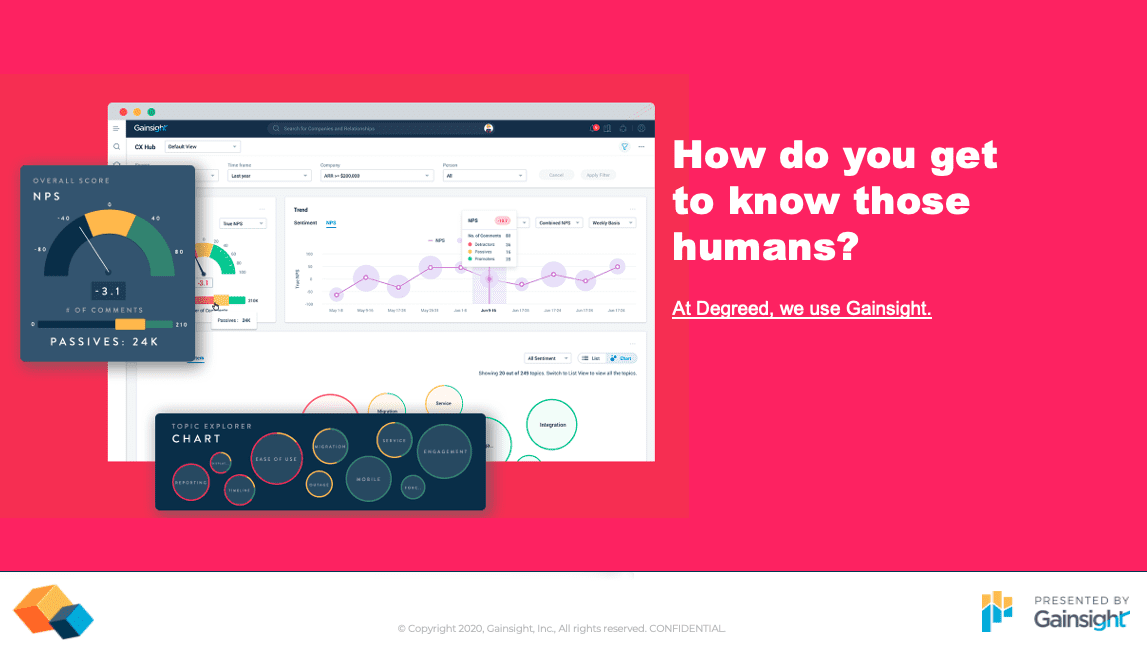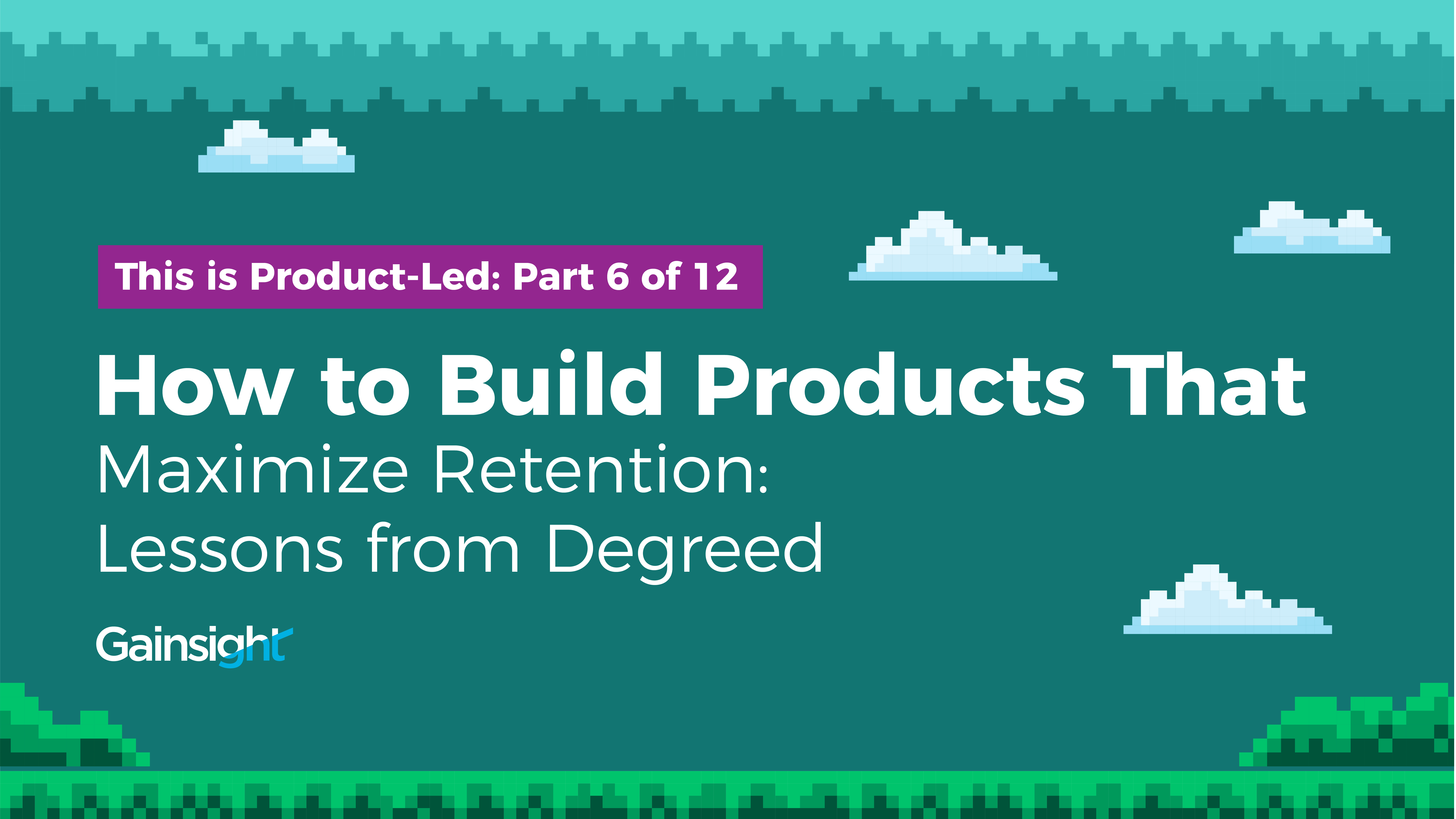This is part 6 of our 12-part series “This is Product-Led,” inspired by our conference for Gainsight PX users, Pulse for Product.
Deep in New Mexico’s Alamogordo desert there lie buried thousands of copies of the 1982 Atari game E.T. the Extra-Terrestrial. The game was such a colossal failure it’s credited with precipitating the decline of the once-iconic video game publisher, and behind the game’s “completely broken” control system lies a lesson for product teams: People have to want to play if you want them to come back.
As Kat Kennedy, Chief Experience Officer at Degreed, explained in her Pulse for Product session, conversations about retention often miss this point. And by the time teams realize it, it’s too late, and the churn has begun.
How to Avoid Atari’s Error
“How often have you been in a conversion with a stakeholder, manager, or CEO, and they say, ‘I think we could do some work to improve retention’?’” asks Kat. “And how often does that idea steer toward a conversation about sending more notifications?”
Invariably, teams without a direct connection to users fail to realize that bringing them back to the product is about a lot more than just letting them know it’s there.
“The average smartphone gets 46 push notifications every day,” says Kat. “Sending yet another one without first knowing why they aren’t coming back just adds to their stress and creates noise. You have to find and fix the root cause.”
Teams must do the hard work of analyzing their user experience. Just because someone buys something doesn’t mean they enjoy it. And by the time it comes time to buy again or renew and they don’t, it’s often too late to win them back. In Atari’s case, pre-game hype and the company’s prestige were enough to buoy initial E.T. sales. But by the time they realized nobody was enjoying it and in fact, hated it, they’d already printed several more runs of cartridges. Several months later, 14 dump trucks laden with floppy disks rambled out across the setting sun of New Mexico’s Alamogordo desert to a literal burial ground for the company’s mistakes.
A few years later, out of money and wracked with debt, Atari was acquired for a pittance. Its golden-era was over.
Any business today can avoid Atari’s mistake simply by getting to know its users. If you’re using notifications to bring them back, are you bringing them back to an experience that sparks joy? Are you giving them more of what they want? What does it actually mean, in their minds, to be successful?
“You have to get to know them. Remember they’re humans, too,” says Kat. This can of course be difficult to do at scale. In Degreed’s case, they have millions of end-users to query. But that’s why product analytics exist—to allow companies to collect both quantitative and subjective, ephemeral, qualitative data via in-product polls and surveys.
“We’re grateful to have Gainsight PX. It helps me ask, at scale, ‘Who are our users? What are they trying to accomplish? What are their moods and responses as they interact with our product?’” says Kat. The answers invariably lead to more user-pleasing decisions.

What About Your Product?
Like players of Atari’s E.T., your users will be far more difficult to coax back after a breach of trust than they were to acquire in the first place. What matters is the experience they have while they’re with you—that’s the key to churn and retention. No amount of apologetic or imploring notifications can fix that.
Instead, look within your product and understand those journeys before it’s too late. Grab a free trial of Gainsight PX today and see for yourself.
